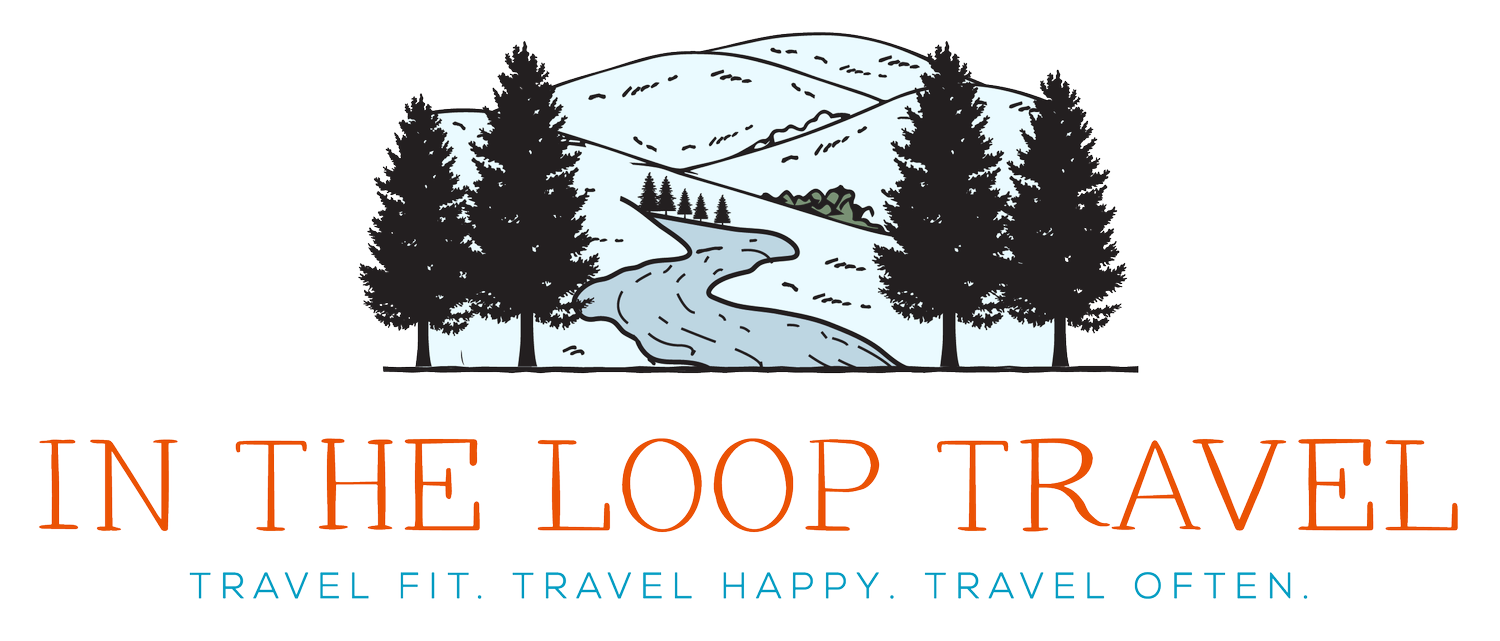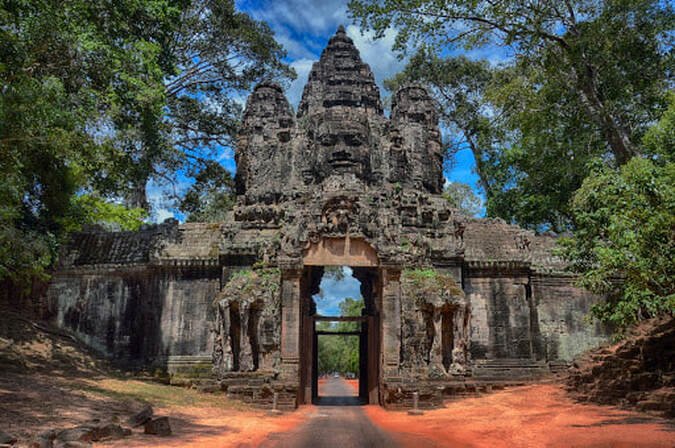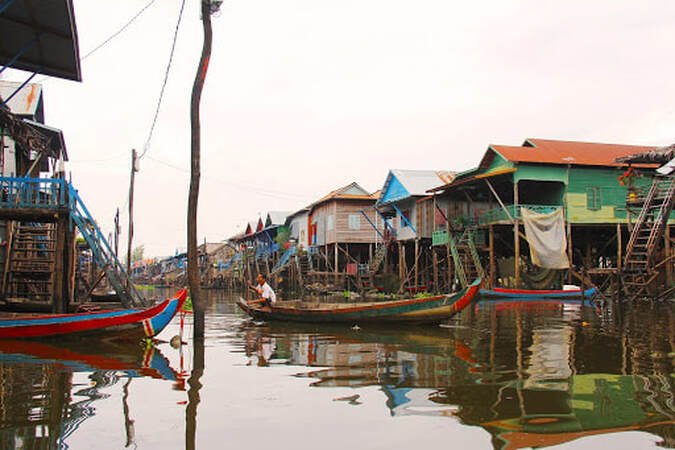Visiting Cambodia’s Floating Villages
Serene faces adorn towers throughout Angkor Thom and welcome you to this popular temple site in Cambodia.
This story is is written by Gloria Mabery, special to In The Loop Travel
A mystic land of kingdoms and wonders thrives over the crumbling remains of the ancient Khmer Empire.
Cambodia was once a challenge for even the most daring travelers. Today, the smallest Southeast Asian country has become an attractive destination for curious and adventurous people who wish to ponder and understand the ravages of war, immerse themselves in Buddhist mysticism and enjoy thriving natural settings.
The beauty and diversity of Cambodia can make for a life-changing experience. Home to the once very powerful Khmer Empire, the landscape of Cambodian is filled with fascinating war ruins, lessons from centuries-old culture and traditions and warm and welcoming villagers who make their lives along the lifegiving mighty Mekong River.
Two vital sources of life, the freshwaters of the Mekong River and Tonle Sap Lake are extremely significant to Cambodia's cultural and historical heritage. Together, they also create a natural phenomenon not found anywhere else in the world. And while there certainly is no shortage of tourist attractions and amazing sites to visit in Cambodia, Tonle Sap Lake is a unique experience that brings visitors closer to the true spirit of this amazing country.
A visit to any of the floating villages on Tonle Sap will give you a look at life on the waterway and how important the Great Lake is to the communities that live there.
Tonle Sap Lake
Tonle Sap is a large freshwater lake in the heart of Cambodia, and it also is the central point of the development of today's modern and thriving city of Siem Reap. Covering 250 kilometers in length and 100 kilometers across, the lake is truly massive. The body is filled with flowing waters, and its name means "large river."
Besides being a large basin of water, this important lake flows in the Tonle Sap River that is part of the system that flows within the Mekong River, which very much affects the changes in the depth and size of the lake over a course of the seasons.
Located near the center of Cambodia, the lake experiences both dry and highwater seasons. Between May and October, monsoon winds bring higher rainfall to this part of the country. In these periods, the levels of the Mekong rise, a little at a time. Until June, there is quite a lot of water flowing into the massive river system of the Mekong. When the levels reach their peak, the waters of the Tonle Sap River change direction of the flow. Yes, instead of flowing directly to the Mekong, they flow backward, into the lake, making this river-lake system among the few bodies of water that can actually change the flow of its waters. Truly amazing!
At the peak of the Khmer Empire, in the 12th century, the Tonle Sap lake and river system nourished a population of a million people. The waters were the main source of food and drinking water, ensuring the residents they wouldn't suffer from hunger. This gave them freedom to focus on building up their cultural heritage by focusing on artistic pursuits. The massive monuments on the river banks, such as the famous Angkor Wat, are the representation of the cultural achievements of what was once a rich civilization.
Tonle Sap and the region around the waterway are stunning places to explore. From the natural beauty and mesmerizing phenomenon surrounding the lake, itself, to the remains of the ancient civilization and fascinating aspects of Cambodian culture, this part of Cambodia brings a truly life-changing experience. The lake and river system can best be experienced cruising during the high-water season.
You Might Also Like These Stories About Cambodia
Our Enchanting Mekong River Cruise in Cambodia and Vietnam
The Five Best Temples in Siem Reap
Six Things to Know Before You Visit to Vietnam and CambodiaThe Floating Villages of Tonle Sap
The most interesting thing about Tonle Sap, undoubtedly, is the community of floating villages. The name comes from the appearance of the houses made to float over the water. Being the main source of food and life, the lake is home to many Cambodians who live in small communities in "floating" houses. Although very poor in terms of money and material things, the villages thrive and nurture the lifestyle of the residents, especially today, when curious tourists are always around. This helps people earn more money, but the situation differs among the various villages. Here are three of the most popular villages on the Tonle Sap that offer the easiest access for tourists:
Chong Kneas Village
Nearest to the city of Siem Reap is Chong Kneas. The village is 16 kilometers from the city, and this makes for convenient access. Therefore, most first-time visitors choose to go see Chong Kneas.
The village consists of both stilted and removable, or floating, houses. The village also features several floating restaurants, and it's very crowded with boats filled with tourists. Therefore, it's not the best place to fully experience and understand Cambodian lifestyle and culture in an authentic way. Another thing this village is famous for: scams performed on tourists in order to finagle some money; this is a poor country, remember.
Each of the villages have their own special characteristics along with a different style of home depending on the conditions at their location on the lake.
Kampong Khleang Village
Kampong Khleang, on the other hand, is the farthest village from Siem Reap, located about 50 kilometers from the city. You can get there by boat, car or renting a tuk-tuk. Because it's so far away from the city, the village sees fewer tourists, and this offers a better chance to witness the true water-floating life and daily rhythms of the villagers.
Kampong Kleang is a more relaxed and authentic place to visit. Sustaining a community of around 6000 people, the village features stilted houses known as the inner village and floating (removable) houses known as the outer village.
The boat tours here are run by residents, and this gives tourists a chance to directly support the community. Large boat tours take you on a predetermined route, but there are also small boats available for an individual excursion around the village. Residents here are very friendly and welcoming.
Kampong Phluk Village
Kampong Phluk represents a community of three villages consisting of stilted houses only. The village makes for interesting scenery during the dry season when the houses are way higher than water levels. For this period of the year, residents use high ladders to get down to the water, and when the rainy season comes along the villages are again floating just above the water levels.
The people here are not very too focused on tourism. They stick mainly to fishing and cultivating rice. There are short road tours that take you around the village and boat tours for exploration of life on the water, but there is nothing significant or specifically interesting about the village.
The main reason to go there is for boat tours that can take you to the flooded part of the forest, which is mostly different from any other boat tour in the floating villages. The boat tours and several small restaurants found there are run by members of the community. This gives you a chance to support the people of Kampong Phluk village in an engaging and important manner.
Have you been to Cambodia? Most tourist get a good look at the temples of Siem Reap and the surrounding region. But a tour of these floating villages would be quite fascinating, as well, we think. Let us know about your travel tips or general experiences in Cambodia in the comments section below.
Thanks for reading,
John Roberts,
In The Loop Travel



